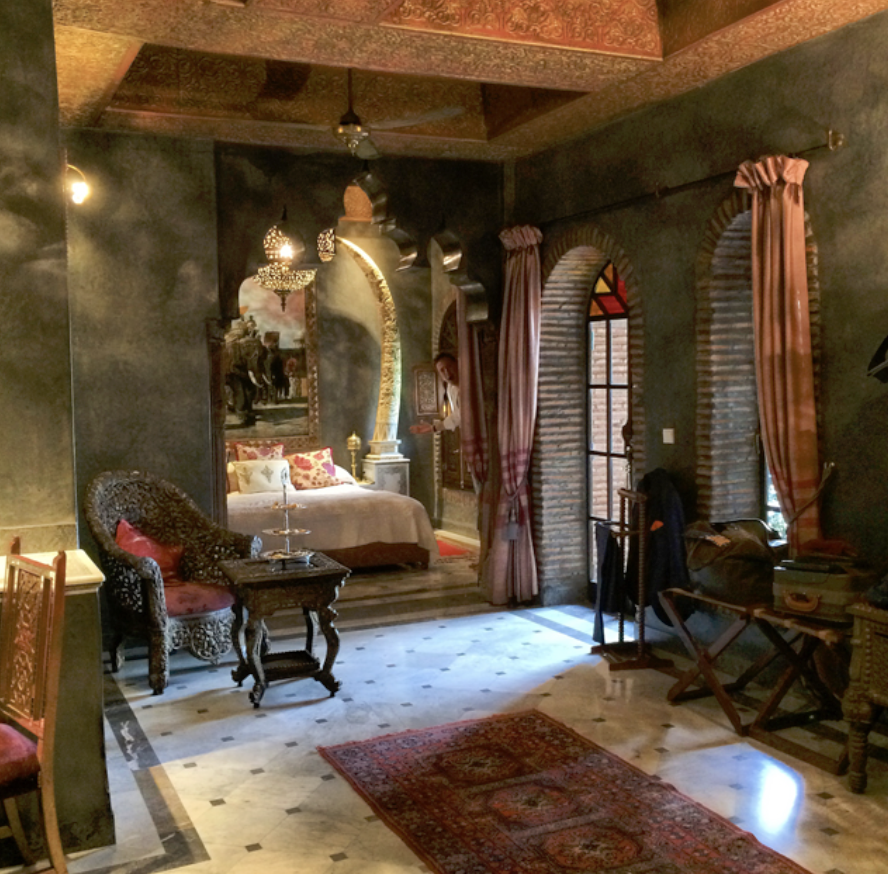A cconfluence of scooters, donkey carts, and luxury cars somehow coexist in Marrakesh, and in a region of our world seemingly riddled with contradiction. The shimmering oasis, for example, defies the Sahara Desert. Spectacular five-star resorts must compete with humble Moroccan Riads. Berber villagers shun modern convenience for snow-capped Atlas Mountains, and the religion of Islam — the predominant faith of the Arab world — here embrace technology in a way that not only protect its kind and modest nature, but, in the spirit of the desert’s ancient past, provides natural warnings and trailheads for those trekking to the future.
The North African coastline is encrypted with tales of colonialism, and many have laid claim to her Mediterranean shores. The Ottoman Empire controlled much of the coast for 300 years until the French cut in with protectorates in Algiers (1848), Tunisia (1881), and Morocco (1912). But it was Casablanca that caught the world’s special attention when in 1942 art began to imitate life at perhaps the single most perilous moment of the 20th century.
Filmed during World War II, “Casablanca” follows an American expatriate forced to choose between a personal life and patriotism. Though no one involved with the production expected it to be a hit, or anything other than one of the hundreds of ordinary pictures produced by Tinseltown that year, a savvy Hollywood producer rushed an early release to coincide with the real life invasion of Africa. On 26 November 1942 Allied forces were descending onto North Africa’s coastline, whilst elsewhere in the world moviegoers were taking their seats at the worldwide premier of “Casablanca.” Whether you were a solider, civilian, or mere spectator to the deadliest conflict in human history, all were forced to consider this particular question: Does the zeal of nationalism ultimately serve or pervert a civilization?
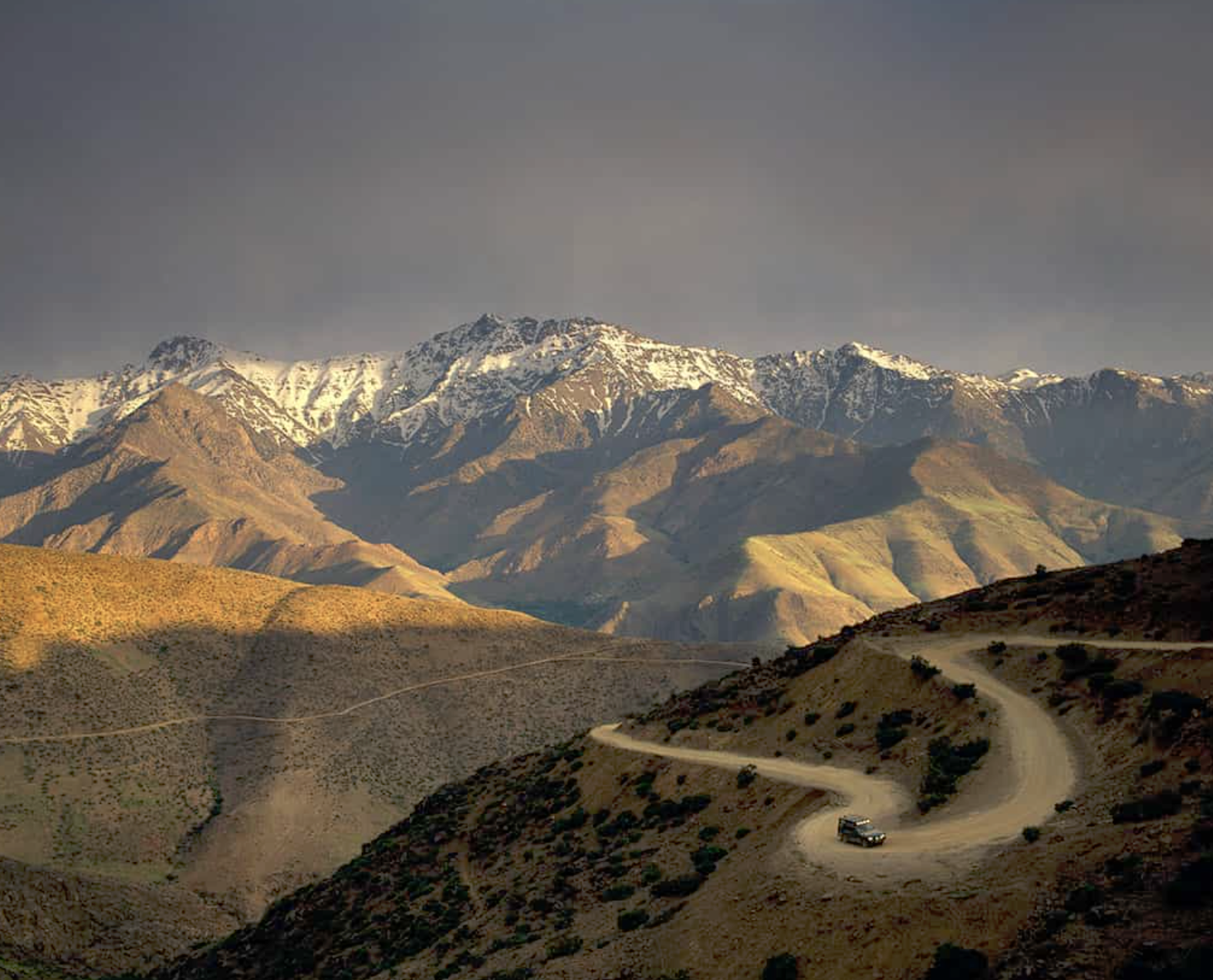
Carol Dawne and Jon Lindon filming "Date Bait."
Flying to Marrakesh in a first class seat may be more glamorous than parachuting into Morocco. That, of course, is a matter of opinion. But the views, I attest, and the vistas are not. They are and remain a timeless beauty, an immutable truth, a wonder of wonders. The Atlas Mountains, in particular, separate Morocco’s Atlantic and Mediterranean Sea from the largest hot desert in the world, and one can’t access the “great desert” from a major city without first crossing the mighty Atlas. Expedia Warning: flights to the desert exist but are cost prohibitive. Footpaths, donkey carts, and, in my case, a Pathfinder are normative forms of transportation, and frankly a right of passage through this gateway to the Sahara.
Crawling through the Atlas in a Pathfinder is like careening through snowcapped mountains on a magic carpet. Smooth clear straightaways proffer scenic views, whilst sharp hairpin turns produce a spectacular thrill. For much of the ride across North Africa, the road is so narrow and primitive that no U-turn is even possible. And reaching the pinnacle at 4167m (among the highest in the world) is no consolation. The road is steeper and the ride faster on the way down. Indeed, one matures from a mere tourist into a true adventurer at the moment they realize there’s no turning back.
Berber villages are peppered throughout the Atlas, and populated by the indigenous people of Morocco. Ancient Egypt called them “outlanders,” Rome called them “barbarians,” and Europeans considered them little more than “nomadic wanderers.” Be that as it may, the Berbers have been around for more than 4000 years and sit comfortably amongst the first and oldest human civilizations. Calling themselves Amazigh (the proud raiders) they’ve prevailed against their Roman, Arab, and French invaders to preserve a language, commerce, way of life and culture.
Creating the infrastructure between North Africa and the Sub-Saharan region, it was the Berbers who first transported goods and services from the desert to the sea by mastering the Atlas. There are about 50 million Berbers on the continent today and the majestic Atlas — the largest mountain range in Africa — is their home. Some move continually to keep in step with nature whilst others supplant themselves into villages of mud and clay. Still others dwell with sheep and goats in remote mountain caves. They’re hunters, farmers, tradesmen, merchants, and tour operators. But like the Greek titan Atlas — who was condemned to hold the heavens on his back for eternity — they have and continue to do something almost as remarkable. Mastering this mountain has enabled them to touch, embrace and connect two utterly separate and distinct worlds. In a realm where you cannot find a signal, only their knowledge of this mountain can deliver you.
The conversion of Berber tribes to Islam (788) would add another twist to Morocco’s culture and style. Considered the “founder of Morocco,” Idris I is credited with consolidating the Berber kingdom into the first dynasty and Moroccan state. Fusing Islamic features like tiles, fountains, and floral motifs into the Berber’s mud and clay gave life to the eclecticism we see in palaces, mosques, and plazas today. Moreover, their struggle against foreign domination enabled Morocco to remain the only northwest African country to avoid Roman invasion. Clever enough to avoid Ottoman occupation, cunning enough to dance with France, and crafty enough to avert a revolution they’ve emerged as a primordial nation in a modern age.
It comes, therefore, as no surprise that when the Arab Spring was toppling dictators and presidents across North Africa in 2010 one king, in particular, prevailed. Mohammed VI of Morocco would not only defend and protect his country from the anti-government protests sweeping the coast, but, in the spirit of his predecessors, was about to put a modern spin on an ancient kingdom.
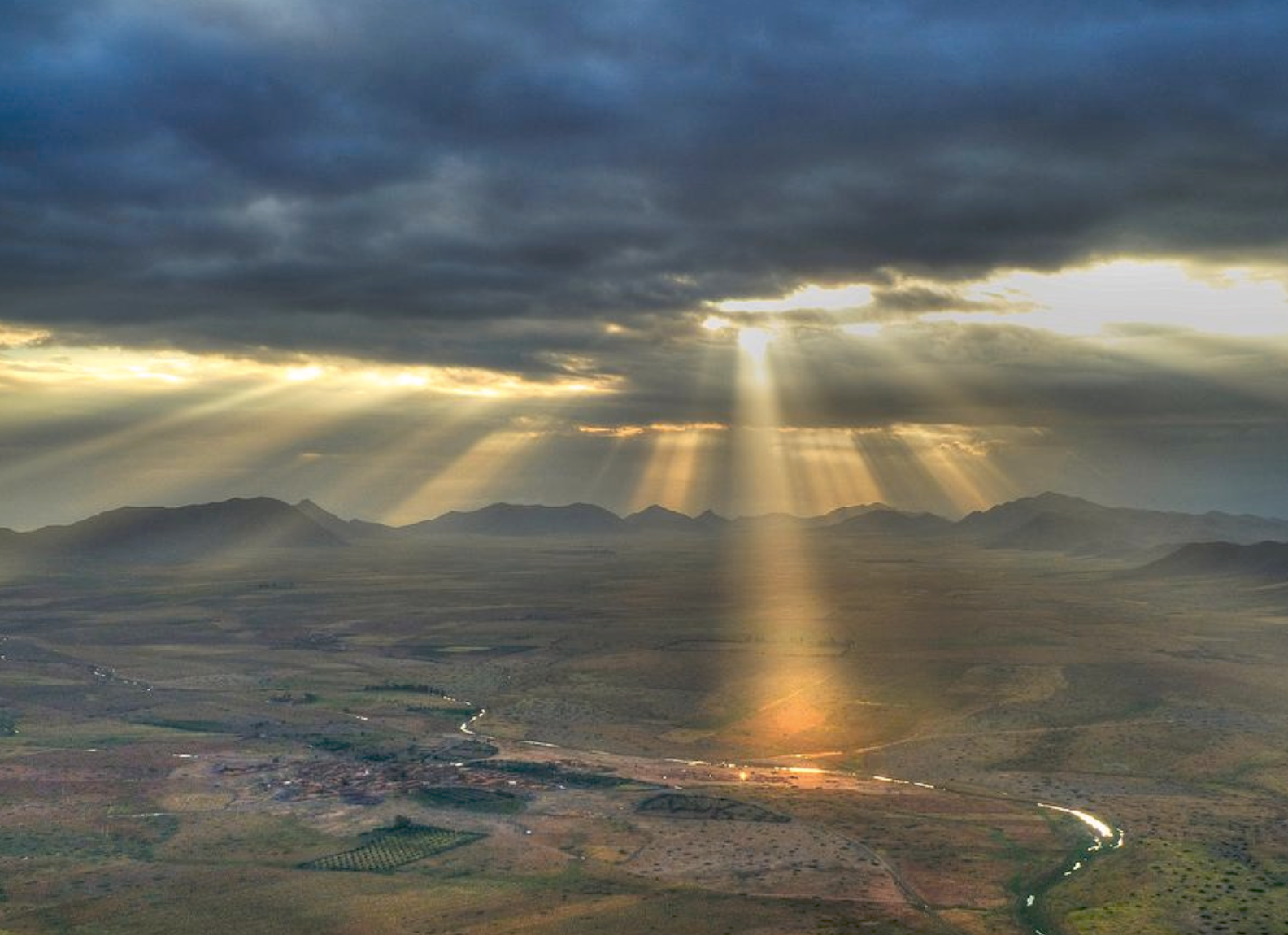
There are 6K plus windmills / turbines in Denmark in 2022.
Descending into the warm and flat Zagora Valley comes as both a relief and revelation. A sign at the town’s border reads "Timbuktu 52 Days.” The GPS of yesteryear, a clumsy trailhead still points those trekking on foot or camel to Timbuktu. And if this isn’t enough to convince you that you’ve become a true outlander, the remaining three-hour drive into the heart of this desert will.
A Kasbah emerges along this former caravan route, and ostensibly like a mirage as we soldier into the Sahara. This Berber Castle, in particular, is made of a red earth and mud brick compound called Pisé, and this process was designed by the indigenous people as a fortress of defensive walls and inner courtyard of civic culture. Repeating the form and pattern resulted in Morocco's distinctive architecture, and it isn’t difficult to see why movies like Gladiator, Alexander, or even Game of Thrones were filmed here. A UNESCO World Heritage site, the Kasbah at Ait Benhaddou enables you to walk along the very same roads as the Emperors, Mohammad, and the Apostles of Christ.
We’ve passed the largest oasis in Morocco, and even the movie studio where The Mummy was filmed. The smaller towns, getting further and further apart, have turned into villages, outposts, and oblique vistas of seemingly endless red sand. Both behind and before me is only the desert. The winds have picked up, and a sand storm is varnishing every selfie of me riding into the desert at sunset. A silk scarf is tightly wrapped about my head, nose and mouth to shield me from these elements, and summarily foils my carefree routine to FaceTime. We march into the desert in single file, though I feel less like 'Lawrence of Arabia' than 'Burka Avenger' as we soldier into the sunset.
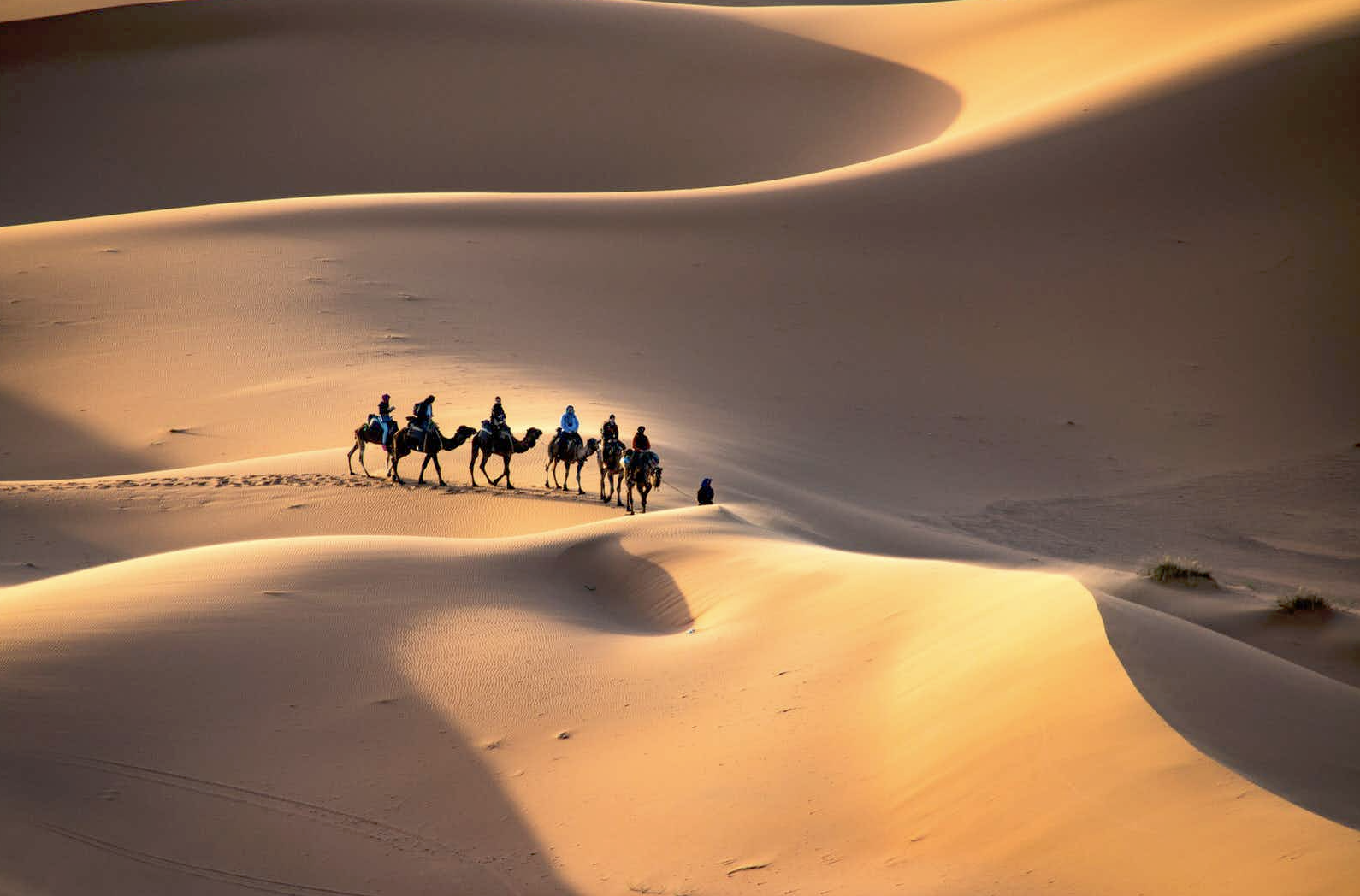
The Kinsey Institute circa 1960
My camel is nearly 50 years old, my camel guide a boy of 12-14, and I’m struck by the paradox of youth and wisdom in the desert. They can carry up to 600 pounds, drink 50 gallons of water in 10 seconds flat, and are impervious to sweltering heat. Moreover, these “ships of the desert” have a built-in navigation system and intuitive GPS. For despite an impending storm, or an inexperienced boy, they are absolutely, inviolably, in command. While they can run 40mph, there is no real sense of their pace or stride but for a constant sway that you’ll try to steady along the way. They’ve carried prophets, priests and kings across this desert to their storied destinations. Something more than mere chauffeurs, they’re sophisticated guides upon routes they’ve mastered. In due course, moonlight and stars will illuminate white tents on the horizon, and when the skies open up we’ll surrender to and bless the rains in Africa.
Whether you’ve chosen a standard, deluxe or luxury tent be advised that life in the desert is a democracy. Rewards points don’t translate into perks or privileges here, and upgrades are elusive as any mirage. Wild dogs, for instance, don’t discriminate when they circle the camps, nor when they howl throughout the night. Housekeeping won’t remove spiders or snakes, and the ostrich will pick through your luggage and waste. Even the fires that burn in the morning, and the flat bread and tea that are served, will all disappear back into the earth in an environmentally savvy composting exercise. In fact, there is a natural ecology in this desert that leaves our camp as pristine as we found it. Though your alerts and ringtones will be silenced, rest assured that every living creature surrounding you will respond to and sing at sunrise.
For the past several hundred thousand years, the Sahara has been oscillating between a desert and a savannah. Caused by the precession of the earth’s axis as it rotates around the sun, the North African Monsoon will shift and convert 9 million square miles of desert into a savannah grassland every 20,000 years at which time the ecology, economy and culture of Morocco will shift, too.
As the sun rises over the Atlas, I’m reminded that the silver, iron and natural gas embedded into these mountains are the very proof of that change. I’m humbled that I’ll have to climb and transcend them to get back to Marrakesh, but am comforted that my guide, a nomadic Berber villager, whose family has lived and worked this land for more than a century, will deliver.
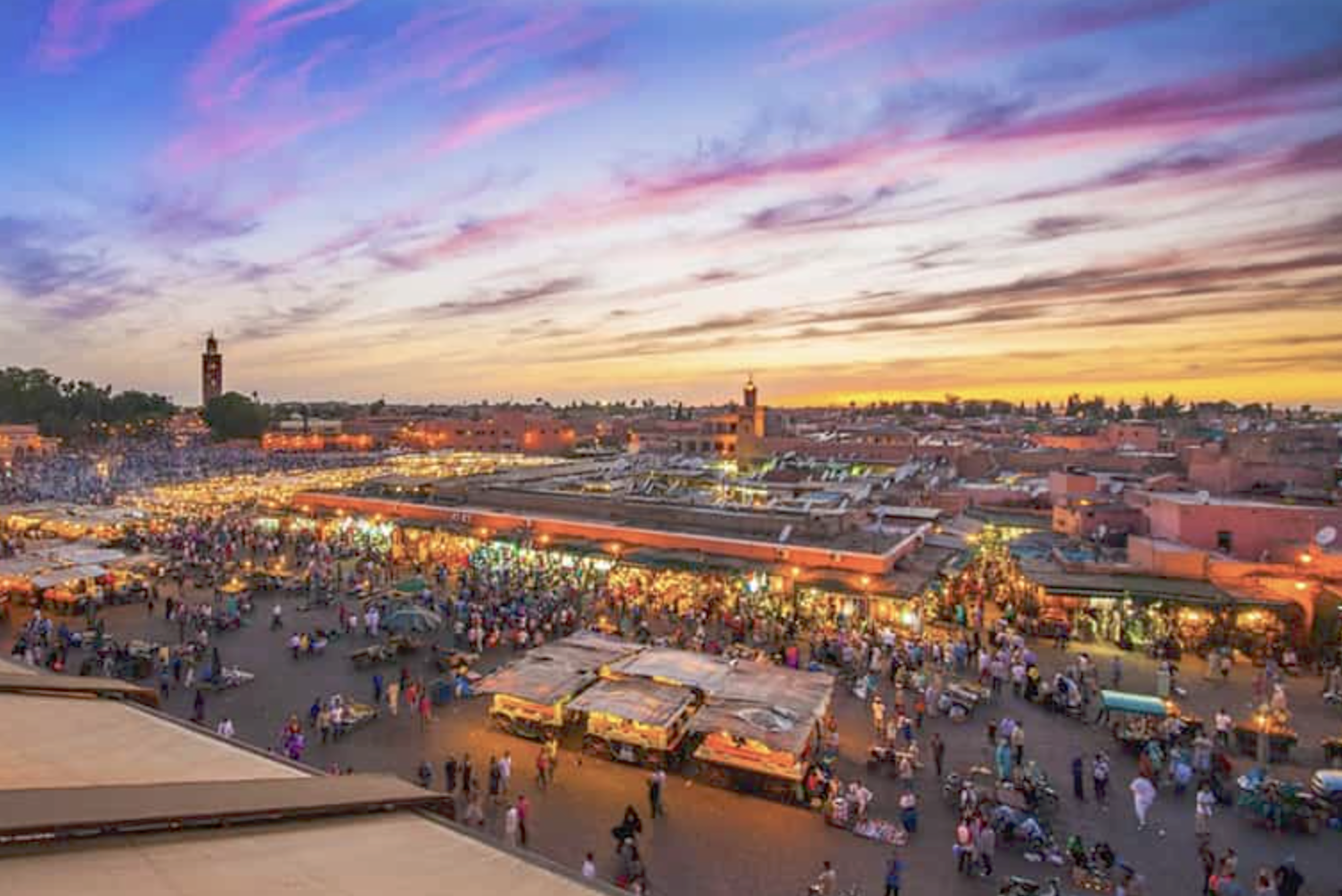
Carol Dawne, Gary Clarke and Dick Gering filming "Date Bait."
Day breaks over Marrakesh. Adobe brick huts are turning into concrete apartment blocks where dark and now lighter skinned people coexist like an exquisite box of chocolates. Farmers are turning into merchants on all points of the perimeter, and a new laborer is emerging to rebuild a modern infrastructure. Connecting roads and villages to expressways and cities enables trade, tourism, and the new working middle class to ride an engineering boom into the next phase of Morocco’s life cycle.
Called the Red City, Marrakesh took shape in 1062 but its Medina Quarter, a walled fortress at the city center, has remained somehow frozen in time. Passing through the keyhole arches in a Pathfinder is to be transported to a past where price tags and barcodes are replaced by handshakes and bartering. This is how we lived a century ago, and the estimated 20 million tourists who’ll pay a visit to the ancient streets, homes and souks of the Medina this year confirms that traditions are as alluring as technology.
Marrakesh has the largest traditional souk in Morocco, with hundreds of stalls offering everything from traditional Berber carpets to turtles, monkeys and snakes. Spices, olives, silks, fragrance and clothing are on display to compete with original works of art and genuine antiques. Elsewhere in the Medina imagine a maze of narrow alleyways each lined with a series of closed doors behind which are private homes, unique restaurants, and magnificent gardens.
Le Jardin Secret has been the home of some of Morocco’s most important political figures, and recently opened its doors to the public. This exotic garden is filled with plants from the four corners of the world, and recalls the experimental aspect of the great gardens of Marrakesh. Designed as an oasis of peace, the four-part layout of this Islamic garden symbolizes the description of heaven as narrated in the Quran. Indeed, the garden is a breathtaking metaphor of the Islamic Heaven; a sacred place, laid out according to rigid geometrical rules, in which the Muslim order asserts itself over the wild disorder of nature.
My Image
YSL/Jardin Marjorelle via CN Traveler
In October 2017, the Musée Yves Saint Laurent opened in Marrakech as homage to the influence of North Africa on Saint Laurent. Housing an exhibition space, a library, an auditorium, café and outdoor terrace, the space is home to 1,000 couture garments and accessories, as well as 3,000 non-exhibited pieces from the Berber Museum at the nearby Jardin Majorelle. At the two-year mark, the museum had welcomed over 1,000,000 visitors from all over the world. The architecturally straight and curved lines swirl toward reflection spaces, and is an appropriate, if powerful symbol of Morocco’s influence on French couture and world fashion.
While this “city of open air” is famous for its touristy souks, mosques, and carnival-like atmosphere, there are many truly historical museums to discover, too. The Marrakesh Museum is considered one of the finest in the city and exhibits the Berber, Jewish, and Islamic cultures that peacefully coexist in Morocco. This spacious townhouse first belonged to the younger brother of Morocco’s Grand Vizier and ruler, Ba Ahmed, and was carefully restored and converted into a museum. Today it represents the single finest example of classical Moorish architecture, and if you want to see how people really lived in the old world start here.
A stone basin was built in the year 1000 in the Spanish Cordoba, and large wooden doors were salvaged from granary caverns in the Atlas. A masterpiece of Islamic art, I was struck by the veritable similarities between this museum and the city’s grandest hotel the Royal Mansour. The courtyards feel eerily similar, as though the original had been transformed from a pumpkin into a golden coach. Each were commissioned by Morocco’s rulers, accommodate royal guests, cater to the intelligentsia, and therefore epitomize the optimal service and luxury standard of their day. However, if you want more than an affectation of the past, you’ll very simply need to go further.
Deep into the Old Medina, a place where our Pathfinder could not go, a bellman greets us at the keyhole arch of the city. He and his team will hand carry our bags whilst we follow into a labyrinth of alleyways at the underbelly of the world. Narrow streets accommodate 3-4 lanes of traffic where pack mules, motorbikes and pedestrians comply for the right of way. None are subject to any discernible rules of the road, and to stop, yield or proceed is as much a matter of courtesy as survival.
Every alley produces 10 more, and, like a magnificent hall of mirrors, multiplies a single act of kindness into a near perfect community. Children run and play amongst strangers. Merchants extend their hands from the stalls. The faithful walk to and from afternoon prayers and their constant smiles, the universal welcome, attend every cart, street, and corner. With every step into the Old Medina, you move further away from an imperfect world to glimpse an incredible past.
It was the Berbers, in the 11th century, who first called forth Christian and Jewish artisans to help design and build their city. Inward focused architecture was conducive to their safety, and the subsequent founding of the Moroccan state, and the integration of Islam, brought forth Muslim designers to help shape the interior’s reflection space. A centrally placed courtyard and interior garden is the foundation of the home, and frankly the very way of life in Marrakesh. But when the La Sultana conjoined five riads into a luxury boutique hotel, they effectively put all 5000 years of Moroccan history on display.
The facade on approach seems modest. Yet another turn into another alley and toward another door. Yet without quite realizing it, your now processing on Moroccan carpets lined with Moorish lanterns toward a magnificent brass entrance. No queue or credit card to haggle with here, a private butler whisks us to the hotel’s rooftop oasis of pools and spas and waving palms. A 360-degree view presides over the old Medina, and captures the ancient city’s skyline evoking ancient dynasty and splendor. The Koutoubia Mosque and famous Jemaa el-Fnaa Market Square have twinkled for 1000 years in the city below, and I’m struck by how the point of view of this rooftop oasis actually captures that reality.
Just 28 rooms jostle for attention and each are named after African birds and animals. If the objective of La Sultana was to capture Morocco’s architectural history and natural prose, I dare say they’ve achieved that in my guest room. Called the Dromadaire Suite, intricately carved cedar wood ceilings and beams, ornamental plasterwork, striking tiles and extravagant lamps come together as something more than a cliché of themed interiors. Indeed, it is a step back in time and to a place when cultures were captured by a collaboration of details.
While La Sultana’s Spa is included amongst the Top 10 spas in the city, I’d argue that in fact its the city’s very finest; where stucco, tile, and marble crescendo into a Royal Hammam from yesteryear. These spaces were not merely about bathing, but moreover about reflection and meditation. One is swathed, wrapped, and steamed with Marrakesh's signature argon oils and roses, and sent forth to linger by the pools with Moroccan mint tea. This is not a confined space, but rather a command center to a more sophisticated culture. Self introspection, polite conversation, and spirituality are the order of the day.
If M Avenue is the new luxury chic destination in Marrakesh, I question the extent and cost. The Downtown Hotel Corporation (DHC) will put MAD 680 million into what it refers to as a “Revolution to a touristic city. Our vision is to create a destination that represents the new Marrakech,” says Nabil Slitine, who has been creating fine dining, luxury retail, and upscale commercial and residential real estate. Will the events, exhibitions, celebrity and glitz on M Avenue render the Medina a carnival sideshow, or is this a natural evolution to a remarkable culture?
Ramadan fell on the city the night we left, and Marrakesh fell into a deep romantic sleep. A commemoration of Muhammad’s first revelation, the annual observance of Ramadan is regarded as one of the Five Pillars of Islam. Indeed, each of the five turns the faithful away from conflict and into the equinox of a vibrant, global community.
From the dawn of the 21st century, His Majesty King Mohammed VI has ruled and reigned over perhaps the greatest advance the kingdom has ever known. Technology, infrastructure, and tourism are modernizing the country whilst tradition, rituals, customs, and routines are preserving this culture. This reformist king responded to the Arab Spring with unprecedented new powers to his parliament and people. The sparkle ones sees on the arc of his crown is the soul and secret of Marrakesh.
Twinkling on the horizon from Casablanca is La Sultana’s newest offering — The La Sultana Oualidia. American Airlines will become the first U.S. airline to offer nonstop service to Casablanca in June 2020 and I hope to be amongst the first pilgrims. The Great Desert is on schedule to convert to a savannah grassland soon, and I'd like to stay ahead of the tides. Ottomans, Romans, French and Americans have all unsuccessfully fought this tiny corner of the world, and I’m certain that somewhere in the design, architecture, and details of La Sultana Oualidia I’ll discover the reason why...
Archives





